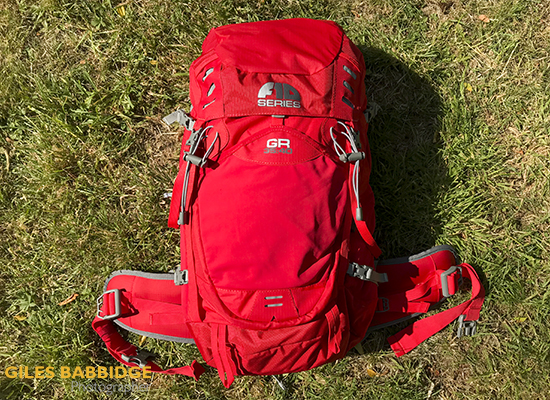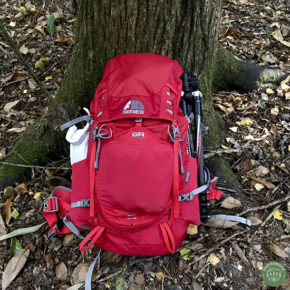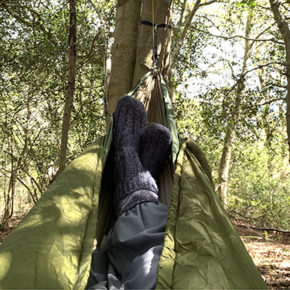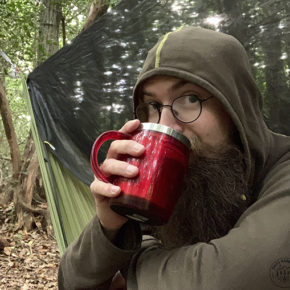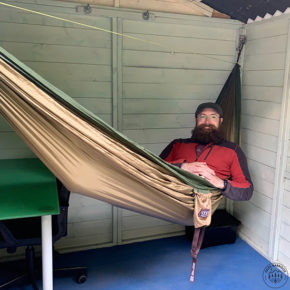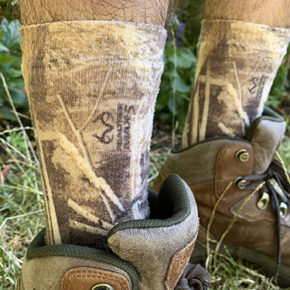Test/Review: Vango Force Ten GR 35:40 Rucksack
A quick preamble
It’s been a busy summer and as we enter one of my favourite times of the year – autumn – I’m finally able to take a moment to a look back at some of my shenanigans and the kit which has served me well along the way.
I’ve had quite a few items on long-term review and it now follows that I’ll be sharing the write-ups with you in the coming weeks.
On this occasion, it’s the turn of the Force Ten GR 35:40 rucksack from Vango, which has been my primary choice on many day/multi-day/week-long trips in recent months.
The first thing you need to know is that this bag has been something of a catch-all on plenty of occasions. Sometimes, it’s mostly carried outdoor kit (think in terms of camping/microadventure gubbins) and on others it has essentially been a camera bag (minus the internal padding).
As ever, this isn’t going to be one of your typical tech-spec write-ups; there are plenty of other sites out there for that. In fact, why not start with Vango’s own product page here? Rather, as you have come to expect from me, these are my thoughts following real-world use in the course of my various activities.
So then…
Intended vs. actual use
The GR 35:40 is billed as combining “the simplicity of a climbing pack, with the functionality of a more sophisticated trekking rucksack” – and in my experience, this is pretty spot on.
You know that one of my pet hates with any item of kit is over-engineering; it just complicates my job so much more when I have to navigate too many zips, clips, toggles, bells and whistles – especially in low light or adverse weather conditions.
Thankfully, and true to form, Vango have done the right thing here and I can’t think of any feature which I’d consider to be unnecessary.
At a push, I’d question whether the single hook & loop fasteners are a worthwhile addition on the rain flaps which cover the zips (they’re quite small). Yes, it’s important to have the extra covering fastened, but I’d like to see a re-think on this front. A series of fasteners or even just making them a bigger would do it.
Having said this, they held in place just fine and no moisture got up, under and into the compartments – so make what of this what you will!
A selective overview
For me, here are the highlights of this pack:
Let’s start with the business end – i.e. the straps and back panel. As I’ve said before, Vango packs have always fitted me very well (I’ve used them for about 25 years!) and once again, I’ve had no trouble here. The adjustable Alp Fit system works a treat, giving a comfortable, snug fit and once set up, it hasn’t slipped or needed any further tweaking.
Yes, in this instance the pack sits right up close to the back (as apposed to a short distance away from it via a mesh panel arrangement). And yes, on hotter days, you do get a damp back from sweating – but at any rate, I’ve never felt what you would call ‘uncomfortable’ as a result.
In fact, across the board, I’ve enjoyed hours of walking with heavy loads on my back, suffering no soreness, especially around the shoulders.
I’m a fan of chunky padding on shoulder straps and waist belts – even on smaller rucksacks – and so the GR fits the bill here, too. There are no added pockets or pouches as is sometimes the case; what you do get, though, is an adjustable chest strap (with emergency whistle) and attachment loops on the AirMesh shoulder straps. The ergonomic hip belt is super-comfy and there’s also a webbing grab handle at the top of the pack – simple but effective.
The stitching is solid, offering the kind of reassurance you need when out on the trail. There have been occasions over the months where I’ve had to grab and pull at the pack in a real hurry and with force; not once did I hear the dreaded sound of material ripping or stitching making its way loose.
Let’s talk about storage options next.
Looking at the front of the bag, there are some nice features which I know many of you will appreciate.
The most noticeable of these is the large Pro-weave pocket which is perfect for softer, less pointy or abrasive items which you might want to grab quickly – think in terms of a tarp, waterproofs, sit mat etc.
Whilst it isn’t fully closable by a zip or similar, the open end is held down by a hook-and-webbing fasting. Again, this did a great job and was easy to operate in the warmer months of testing. I’ll be interested to see whether it’s a slightly different story in the winter, when thick gloves will be factored in on cold days/nights.
Bungee cords/webbing loops are also in place on the front of the pack, to secure 2 walking poles or ice axes. As a photographer, I also found these – as always – handy for attaching a lightweight tripod.
One of the big selling points of the GR 35:40 is its clam shell zipped access to the main compartment. I’ve lost count of how many times this saved me a lot of hassle! Having packed my kit in a logical way, it was so easy to quickly grab an item. On occasions, the main closure straps of the bag could get in the way a bit – but quickly unclipping them (or loosening them a touch) soon sorted this.
Each side of the bag has a Pro-weave pocket, suitable for a water bottle. Compared to other packs from Vango, I found the elasticated opening to these a bit narrower and more restrictive than usual, but in practice they worked very well – and not once did my water bottles fall out.
The GR 35:40 is another of those rucksacks which employs a floating lid up top. Regular readers will know that I’ve never been a big fan of this design, preferring a permanently-attached-all-the-way-around lid, a la traditional packs. Thankfully, though, Vango once again chose to fit its additional panel (which I originally saw on the Nanga 50+10) to help combat the slipping which often occurs.
On many occasions, I was able to completely discount the possibility of the lid slipping by securing the back of it down so that it actually sat behind (rather than over) the top of the Alp Fit panel/shoulder straps. Not ideal in rain, perhaps (besides you’d employ the built-in rain cover on those occasions), but it worked a treat.
As ever, personal preference plays a big part in kit setup; what works for me might not be your favoured approach.
Conclusion
You can probably tell that I like the Force Ten GR 35:40 rucksack a lot. As I said right near the start, it’s function over fashion that I look for in the tools that allow me to do my job – and here is another example of a great product which shines under pressure.
From the durable Excel®210D Ripstop Nylon construction and laser-cut reflective panels to the multiple attachment points and practical placement of decent-sized pockets, this bag has consistently performed extremely well.
It therefore comes highly recommended for anyone looking for a pack that will stand up to regular use across a range of outdoor activities – whether it’s extended photography days or full-on multi-day wild camping trips.
—
For behind-the-scenes pictures of this rucksack in action, take a look at my Instagram feed.
Category: Camping, Location photography, Microadventure, Test/Review

